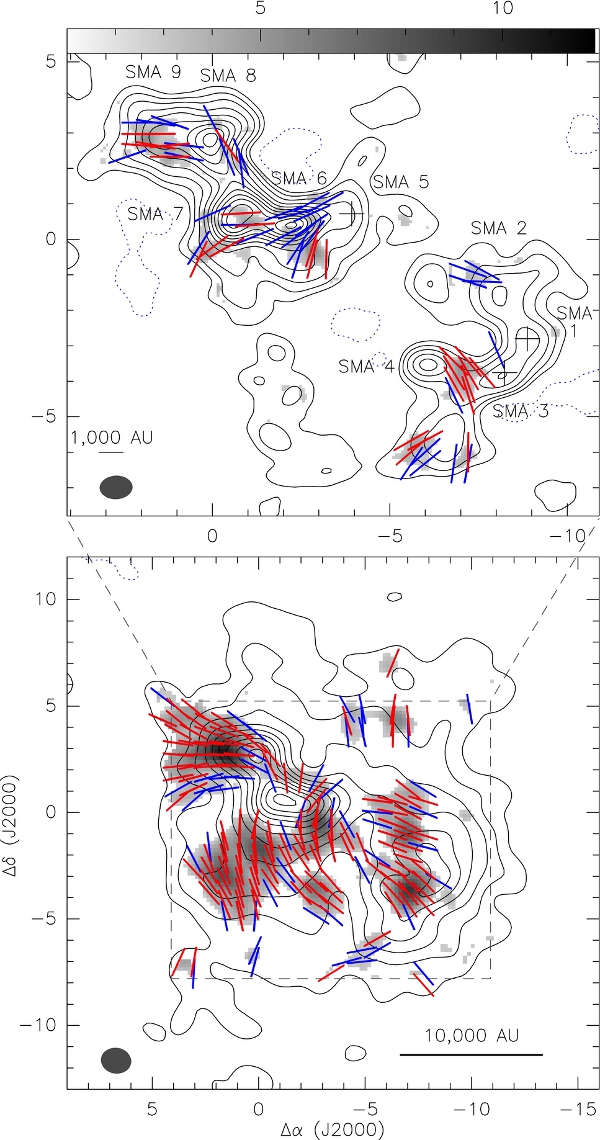| EPoS Contribution |
|
Magnetic Fields and Massive Star Formation
Josep Girart ICE (CSIC-IEEC), Barcelona, ES | |
| We present results from an SMA Legacy project based on the observations of a total of 15 filamentary molecular clumps forming massive stars. The high resolution observations allow to trace the magnetic field in <0.1pc cores embedded in the massive clumps. We found that the magnetic fields threading the massive clumps are in general relatively uniform. The magnetic fields appear, in most cases, to be perpendicular to the major axis of the filaments where the cores are embedded and be parallel to the large scale magnetic field. However, there is no correlation between the axis of molecular outflows associated with these dense cores and the magnetic field direction in the cores. Our findings suggest that magnetic fields play an important role during collapse of massive molecular clumps and the formation of dense cores at spatial scales of < 0.1 pc. At the scale of an accretion disk (< 1000 AU), gravity and dynamic interactions in close binary or multiple systems dominate over magnetic fields. Therefore, outflows emanating from the disk do not maintain the magnetic direction in the 0.1pc core. | |
 | |
| Caption: Image of DR21(OH), the target of the Legacy sample with higher fragmentation level and the most disturbed magnetic field. Yet,the magnetic field is still approximately in equipartition with the turbulent energy. This figure shows the contour map of the dust emission at 880 μm, overlapped with the gray-scale intensity of the dust linear polarized emission and the B segments. Bottom panel: images with an angular resolution of 1.3arcsec. Top panel: images with an angular resolution of 0.75arcsec (obtained excluding the shortest baselines). The red and blue segments show the magnetic field segments with a significance level of >3σ and between 2.5σ and 3σ, respectively. | |
| Collaborators: Q. Zhang, CfA, USA P. Frau, OAN, Spain P. Koch, ASIAA, Taiwan K. Qiu, U.Nanging, China H. Liu, ASIAA, Taiwan Y.W. Tang, ASIAA, Taiwan et al. |
Key publication
Suggested Sessions: Magnetic Fields |

